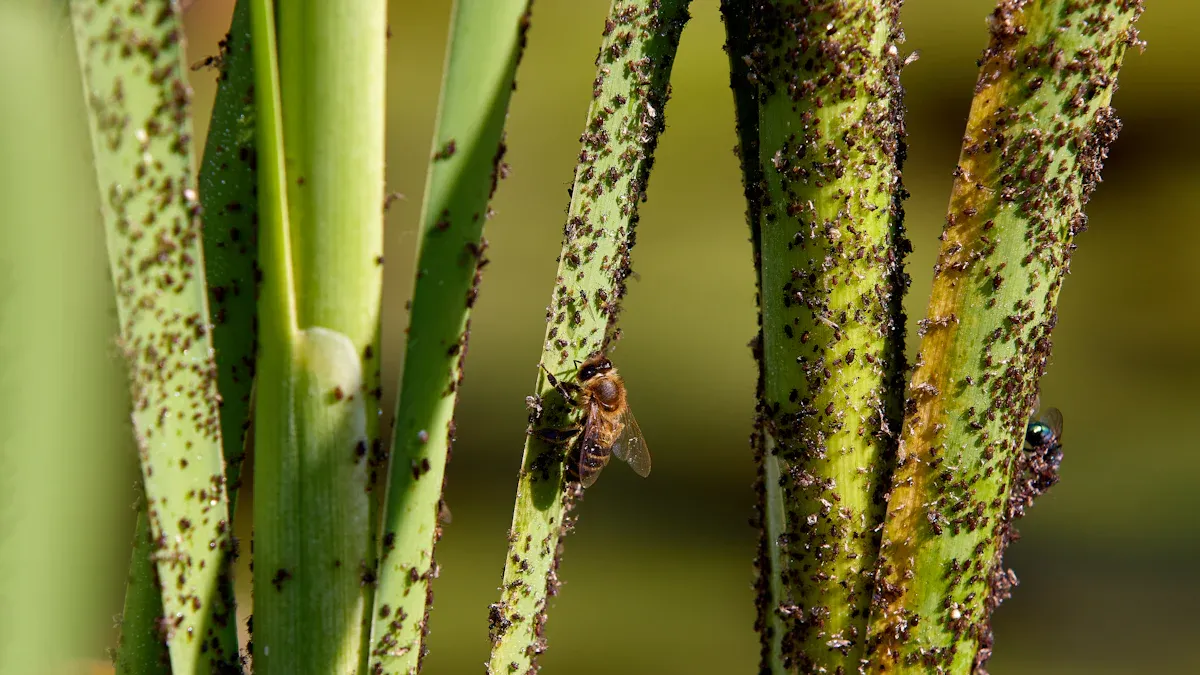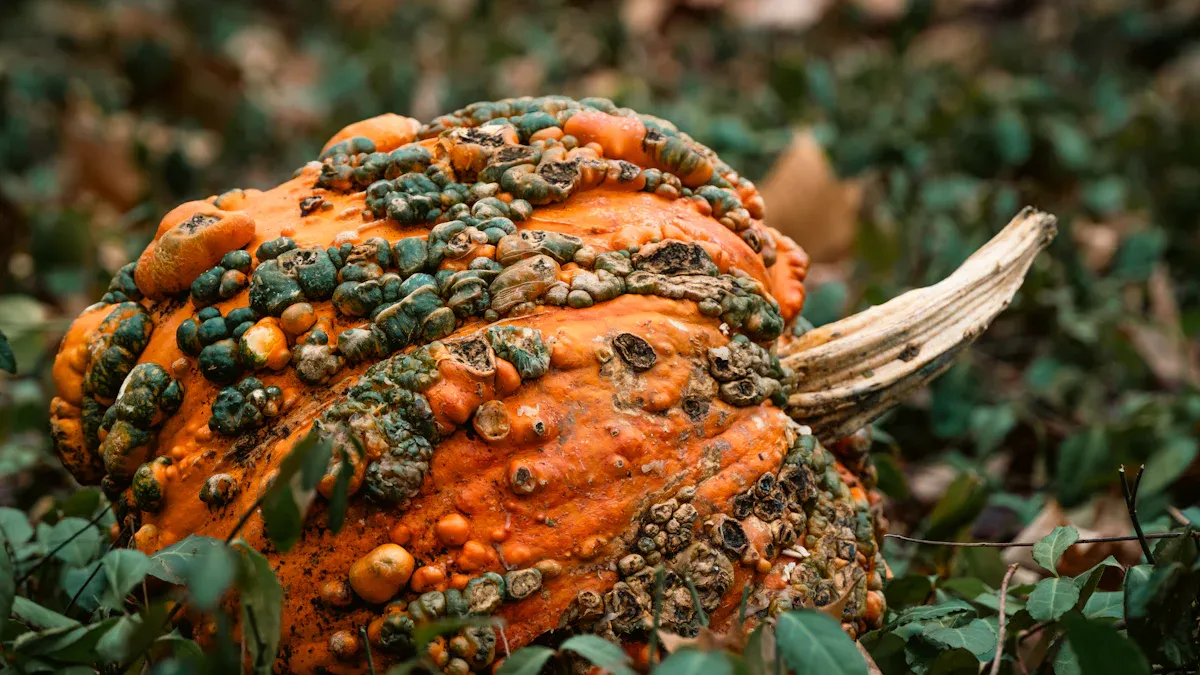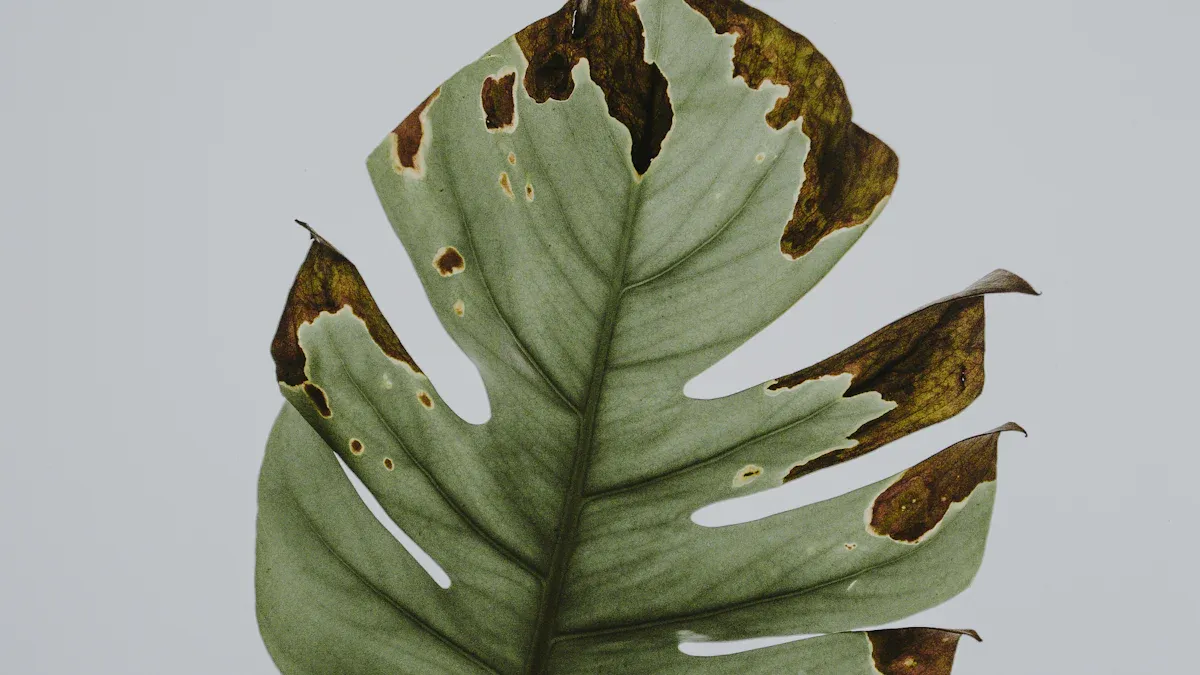
Recognizing plant diseases early is vital for the health of your Lantana plants. When you identify symptoms promptly, you can apply effective treatments. This proactive approach helps maintain vibrant and thriving plants. Healthy Lantana not only enhances your garden’s beauty but also attracts beneficial pollinators. By staying vigilant, you can ensure your plants flourish and resist common Lantana plant diseases.
Key Takeaways
Early detection of Lantana diseases like Botrytis Blight and Powdery Mildew is crucial. Regularly inspect your plants for symptoms to take timely action.
Environmental factors such as humidity and temperature significantly impact Lantana health. Maintain good air circulation and monitor conditions to prevent disease.
Utilize organic solutions like neem oil and baking soda to treat common Lantana diseases. These methods are effective and environmentally friendly.
Implement preventive measures such as proper watering and regular pruning. These practices help keep your Lantana plants healthy and disease-free.
Stay proactive in your gardening efforts. By understanding and managing Lantana diseases, you can ensure vibrant and thriving plants in your garden.
Common Lantana Plant Diseases

Botrytis Blight
Botrytis Blight, also known as Grey Mold, affects Lantana plants during cool, damp weather. You can identify this disease by observing several symptoms:
Abnormal development and browning of buds and flowers.
Irregular flecks and brown spots on flowers.
Soft brown spots on leaves.
A gray mold covering affected parts after damp conditions.
The primary causes of Botrytis Blight include:
Cool, damp weather.
Poor air circulation around the plants.
The presence of dead plant debris where the fungus can overwinter.
To prevent this disease, ensure good air circulation and remove any dead plant material from your garden.
Powdery Mildew
Powdery Mildew is one of the most common diseases affecting Lantana plants. It thrives in conditions with cool nights and warm days, especially when humidity is low. Symptoms of Powdery Mildew include:
White to grayish patches on leaves.
Distortion and yellowing of leaves.
Premature leaf drop.
Environmental factors that contribute to this disease are:
High humidity for spore formation.
Low humidity for spore dispersal.
Favorable warm weather (70-80°F).
Most infections result in cosmetic damage, with minimal effects on plant vigor and blooming. To manage Powdery Mildew, consider the following:
Ensure your plants receive at least 8 hours of full sun exposure.
Avoid slow-draining soils that retain moisture.
Evidence Type | Description |
|---|---|
Common Diseases | Powdery Mildew is one of the two most common diseases affecting Lantana. |
Environmental Factors | Outbreaks occur in spring and late summer or early fall, particularly under specific conditions. |
Temperature Influence | The disease is more prevalent when nighttime temperatures are cooler than daytime temperatures. |
Humidity Impact | Low humidity allows spores to spread easily, contributing to the disease’s prevalence. |
Overall Impact | Most infections result in cosmetic damage, with minimal effect on plant vigor and blooming. |
Brown Blotch Disease
Brown Blotch Disease manifests through lesions on stems or petioles. You can recognize it by looking for:
Dark-colored or gray leaves.
White or light-colored flecks on petals.
Soft rots and irregular tan to gray lesions.
High humidity and the spread of spores in the air, particularly during cool spring temperatures, primarily cause this disease. To combat Brown Blotch Disease, maintain proper spacing between plants to improve air circulation and reduce humidity levels.
Aster Yellow Phytoplasma
Aster Yellow Phytoplasma is a significant concern for Lantana plants. You can identify this disease by observing misshapen leaves and other symptoms:
Narrowing leaves.
Yellow foliage.
Sterile seed and shortened branches.
This disease is caused by a mycoplasma-like organism spread by leafhoppers. Symptoms typically appear 10 to 14 days after the insect feeds on an infected plant. To manage Aster Yellow, monitor your plants for leafhoppers and take action to control their population.
Cause/Symptom | Description |
|---|---|
Cause | Mycoplasma-like organism spread by leafhoppers. |
Early Warning Sign | Symptoms appear 10 to 14 days after insect feeding. |
Symptoms | Narrowing leaves, yellow foliage, sterile seed, shortened branches. |
By understanding these common Lantana plant diseases, you can take proactive steps to protect your garden and ensure the health of your plants.
Symptoms

Visual Signs
Identifying the visual signs of diseases in your Lantana plants is crucial for early intervention. Here are the key indicators for each common disease:
Disease | Visual Indicators |
|---|---|
Powdery Mildew | Small white specks on leaves that grow into large masses covering both sides. Stems and flowers may also be covered in spore growths. |
Botrytis Blight | Brown or bronze specks on foliage and flowers, especially after wet and cold weather. Flowers may die off faster, and a fuzzy greyish mold can cover plant parts. |
Aster Yellow Phytoplasma | Dwarfing, mottled foliage, yellowing or necrotic areas on leaves. |
Brown Blotch Disease | Dark lesions on stems or petioles, with soft rots and irregular tan to gray spots on leaves. |
Recognizing these signs early allows you to take action before the disease spreads.
Environmental Factors
Several environmental factors contribute to the development of common Lantana plant diseases. Understanding these can help you create a healthier growing environment. Consider the following:
Humidity Levels: High humidity can promote fungal diseases like Powdery Mildew and Botrytis Blight. Ensure good air circulation to reduce moisture.
Temperature Fluctuations: Lantana thrives in warm conditions but can suffer during cool, damp weather. Aim for temperatures between 70-80°F for optimal growth.
Watering Practices: Overwatering can lead to root rot and other diseases. Water your plants early in the day to allow foliage to dry before nightfall.
Soil Drainage: Poorly draining soil retains moisture, creating a breeding ground for pathogens. Use well-draining soil to prevent water accumulation.
By monitoring these environmental factors, you can significantly reduce the risk of diseases affecting your Lantana plants.
Treatments
Organic Solutions
You can effectively treat common Lantana plant diseases using organic solutions. Here are some methods to consider:
Neem Oil: This natural pesticide works well against various fungal infections, including Powdery Mildew and Botrytis Blight. Mix neem oil with water according to the package instructions. Spray it on affected plants every 7-14 days until symptoms improve.
Baking Soda: A simple solution for Powdery Mildew involves mixing 1 tablespoon of baking soda with 1 gallon of water. Spray this mixture on your plants every week to help control the disease.
Garlic Spray: Garlic has antifungal properties. Blend a few cloves of garlic with water, strain the mixture, and spray it on your Lantana plants. This can deter pests and help manage diseases.
Companion Planting: Planting herbs like basil or marigolds near your Lantana can deter pests and improve overall plant health. These plants can create a more balanced ecosystem in your garden.
Chemical Treatments
If organic solutions do not yield results, you may need to consider chemical treatments. Here are some options:
Fungicides: Look for fungicides specifically labeled for use on Lantana. Products containing chlorothalonil or myclobutanil can effectively combat Powdery Mildew and Botrytis Blight. Follow the manufacturer’s instructions for application rates and timing.
Insecticides: For Aster Yellow Phytoplasma, controlling leafhoppers is crucial. Use insecticides that target these pests. Always read the label to ensure it is safe for your Lantana plants.
Tip: Always apply chemical treatments in the early morning or late evening to minimize harm to beneficial insects.
Preventive Measures
Preventing diseases is often easier than treating them. Here are some preventive measures you can take:
Proper Watering: Water your Lantana plants at the base to keep foliage dry. This practice helps prevent fungal diseases.
Good Air Circulation: Space your plants adequately to allow air to flow freely. This reduces humidity around the plants and helps prevent diseases like Botrytis Blight.
Regular Pruning: Remove dead or diseased plant material promptly. This practice helps prevent the spread of diseases and encourages healthy growth.
Soil Health: Use well-draining soil to prevent water accumulation. You can also amend your soil with organic matter to improve drainage and nutrient availability.
By implementing these treatments and preventive measures, you can protect your Lantana plants from common diseases and ensure they thrive in your garden.
In summary, you must regularly monitor your Lantana plants for signs of disease. Early detection allows you to take action before problems escalate. Remember these key points:
Identify common diseases like Botrytis Blight and Powdery Mildew.
Understand the environmental factors that contribute to these issues.
Implement effective treatments and preventive measures.
By taking proactive steps, you can ensure your Lantana plants remain vibrant and healthy. Happy gardening! 🌼
FAQ
What causes Lantana plant diseases?
Lantana plant diseases often arise from environmental factors like humidity, temperature fluctuations, and poor air circulation. Fungal infections, pests, and inadequate watering practices can also contribute to disease development.
How can I prevent diseases in my Lantana plants?
To prevent diseases, ensure proper watering, maintain good air circulation, and space your plants adequately. Regularly prune dead or diseased material and use well-draining soil to promote healthy growth.
When should I treat my Lantana plants for diseases?
Treat your Lantana plants as soon as you notice symptoms. Early intervention helps prevent the spread of diseases and minimizes damage to your plants.
Are there any natural remedies for Lantana diseases?
Yes! You can use neem oil, baking soda, or garlic spray as natural remedies. These solutions can help manage fungal infections and deter pests effectively.
How often should I check my Lantana plants for diseases?
Regularly inspect your Lantana plants, ideally once a week. Early detection of symptoms allows you to take prompt action and maintain the health of your plants. 🌱

